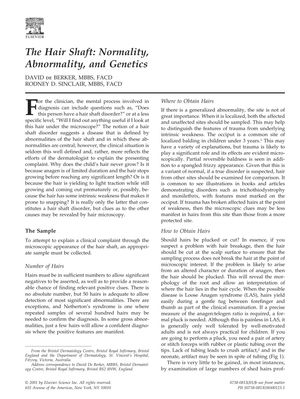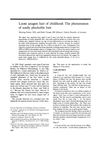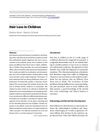The Hair Shaft: Normality, Abnormality, and Genetics
March 2001
in “
Clinics in Dermatology
”
hair shaft disorders hair microscopy trichorrhexis nodosa bubble hair monilethrix Loose Anagen Syndrome trichocyte keratins hHb6 gene chromosome 12q13 anagen roots root sheath hair shaft disorders hair microscopy trichorrhexis nodosa bubble hair monilethrix Loose Anagen Syndrome trichocyte keratins hHb6 gene chromosome 12q13 anagen roots root sheath

TLDR Hair microscopy is useful for diagnosing hair disorders, but clear definitions are needed for accurate genetic analysis.
The document from 2001 highlights the role of hair microscopy in diagnosing hair shaft disorders, suggesting that a sample of about 50 hairs is usually enough to detect abnormalities, though some conditions may require more. It provides guidance on hair sample collection and analysis, noting the importance of sampling from both affected and unaffected areas and the differences between plucking and cutting hair for analysis. The paper describes various microscopic features of hair damage and abnormalities, such as trichorrhexis nodosa and bubble hair, and acknowledges the challenges in interpreting these findings due to the wide range of normal hair phenotypes. It also discusses genetic factors in hair shaft dystrophies, particularly monilethrix and Loose Anagen Syndrome (LAS). Monilethrix is associated with mutations in the trichocyte keratins, especially in the hHb6 gene on chromosome 12q13, which leads to structural weakness of the hair shaft. LAS is characterized by easily shed hair and anagen roots without a root sheath, but its diagnostic criteria are not well-defined. The paper concludes that while hair microscopy is a valuable diagnostic tool, strict definitions are needed for accurate genetic studies, and some conditions like LAS may be due to delayed maturation rather than a structural defect.



